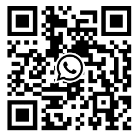Nine key points to optimizing IoT connectivity
Due to the distributed nature of IoT, connectivity / network is be the most critical element in the entire IoT stack. This is also an area of maximizing the consideration of the use-case requirements, the nature of the deployment, and the sensitivity and trade-off of the functionality of the technology used.
There are huge differences in how the Internet of Things is deployed, which has the biggest impact on connection selection. In this paper, Xiaobian examines nine key points to be considered when making IoT connectivity decisions.
1. Cost
This is always a consideration and limitation for developers to use IoT devices. Few applications are completely price-insensitive, which means that there is always an incentive to keep prices low. The link between price reduction and adoption is not linear, and halving the cost of entering the site, either in connection or hardware costs, could mean more than double sales.
For example, disposable devices may be used at high prices to track high-value assets such as pharmaceuticals or precious metals, but the number of these devices is small. By reducing the price by 90%, it can apply to millions of low-value assets. By 99 percent, there's no limit.

2. Energy / power supply
Power supply, especially access to the main power supply, is a key determinant of the IoT application architecture. Using battery power requires many compromises in the connection technology used, communication protocols, processing, etc. All of these choices have implications for electricity use and require some kind of trade-off.
More than a quarter of today's enterprise iot deployments rely on battery power sources, and with the increasing popularity of LPWA technology, the ability of enterprises to deploy applications without primary power sources will only increase. By 2030, it is likely that 50% of enterprise iot deployments will be large or entirely battery-based devices.
3. Speed
The requirement for high-speed connections depends heavily on the type of use case. Changes are very wide, from "trigger" use cases to video-based use cases, which may require the transmission of continuously rich data streams. Performing some processing on the device reduces the need for high bandwidth connections.
4. Delay
For some use cases, the key is not necessarily the amount of data to be sent, but the round-trip time between the device and the server. For example, industrial automated processes, or self-driving cars may require very low latency. Reducing latency is one of the key motivations for implementing some form of edge computing, making processing closer to IoT devices rather than needing to communicate with a central server hundreds of kilometers away.
Some protocols are better suited to reduce latency, such as those that do not require a complex handshake between the client and the server. For example, UDP supports a lower latency than TCP.
5. Availability
Where a device is located is a limitation when it limits access to a particular network, a power source, and / or people's ability to access the device. Geographically remote devices can have very limited access to low-bandwidth or expensive technology, or both. This could create a strong impetus for increasing processing on devices, using machine learning to automate local decisions.
This helps to minimize the amount of traffic that is needed to be sent. This limitation also has strong implications, for example, which network protocols can be used and prefer to use protocols like MQTT-SN. In addition, being in a remote position may also limit people's ability to manually change their devices.
6. Mobility
Some IoT use cases are mobile, while others are static. This has implications for the choice of technology. For example, connected vehicles need cellular technology that can switch between cells at high speed. In contrast, static equipment may require technology with superior propagation characteristics to ensure coverage within buildings or at remote locations.
7. Durability
Mainly shifting to hardware, some iot deployments will require rugged devices able to withstand extreme temperatures and vibrations. This would have some effect on other connectivity-related choices. For example, more robust devices would often favor the MFF 2 welded SIM or iSIM over removable SIM cards, which has potential implications on how connections are provided.
8.Space
This is related to the size of the device and the resulting inherent limitations. Monitoring equipment connected to industrial equipment may be of any size when reasonable, although reinforcement may need to be considered to deal with vibration, dust, heat and cold.
By contrast, smartwatches need to follow a very strict set of sizes. This has particular implications for weighing other factors, such as price, where smaller components tend to be more expensive. For example, using either eSIM or iSIM can significantly reduce the spatial requirements for cellular connectivity.
9. Safety
Some use cases have higher intrinsic security requirements than others, such as cases involving payment, processing potential personal or family data (, cases with life risk, or related to critical national infrastructure. However, this does not mean that the common use case does not require appropriate levels of security.

There is a set of even less use-case-specific constraints that also need to be included in the trade-off between the various elements of the proposition:
compliance
With the maturity of the Internet of Things, various relevant regulations have been introduced around the world. These include permanent roaming, data sovereignty, and new rules around the security of IoT devices. The new regulations vary widely between countries, creating an increasingly complex environment in which paying close attention to all possible regulatory issues is a challenge.
Commercial proposition
Each IoT deployment uses products and services sourced from third parties, whether it be cloud hosting, system integration, or cellular connectivity. Different providers will be able to provide support in different ways, and in some cases, the proposal may not be entirely consistent with the optimal configuration of the use case. Some aspects of the functionality outlined in the above points may need to be compromised to reflect the reality of the commercial claims available in the market.
sustainable development
Environmental factors are increasingly important to enterprises, especially in IoT deployments, which are often implemented specifically to help achieve the Sustainable Development Goals (SDG). Consideration of power consumption, or e-waste, may influence specific approaches to IoT deployment. Decisions around how to deploy the IoT will involve considering each constraint, and more importantly, the relationships and trade-offs between them.
For example, devices that need to rely on low-bandwidth networks may require additional functionality to preprocess data on the device. Similarly, with unlimited funding, most other challenges can be addressed, for example through very small components or using expensive networking technologies. Some of them may require a compromise when deciding on the best combination of technology and equipment specifications to be used.


